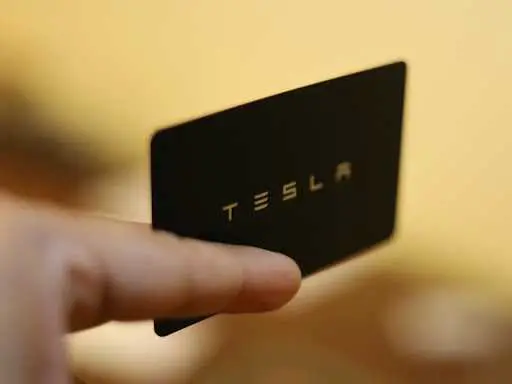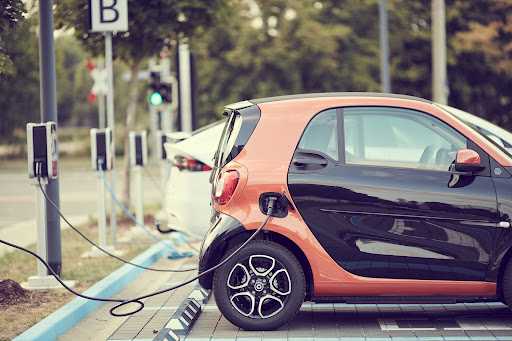Do Tesla Cars Use Oil for Lubrification?
Electric cars like Tesla aren’t similar to traditional combustion engine cars in any way – not only in their external features and look but also in their internal parts – and that’s no secret. They don’t have engines, exhaust systems, and clutches, eliminating the need to change motor oil. But do they use oil for lubrification?
Tesla cars use oil for the Lubrification of the small moving and spinning components inside their drive units. These units are sealed and not easily accessed. They may also have oil filters to keep the oil clean. Teslas also require grease for lubricating doors, windows, handles, latches, etc.
If you’re curious to know whether Teslas use oil for Lubrification or not, read the remainder of this article. We’ll answer this question and other related topics in more detail. We’ll see what kind of lubricant Tesla uses and how often you should change it.
Tesla Needs Lubricant, Too!
Electric cars have much easier and cheaper maintenance than regular combustion engine vehicles. While Teslas don’t have a motor in the conventional meaning and don’t require oil change like traditional cars, they still need to be well-lubricated.
So, when people say that Tesla cars need oil, they mean lubrication oil, not motor oil. Tesla electric cars have electric motors that are quite different from traditional ones and don’t have any oil.
Instead, Teslas have some lubrication oil in their differential or gearbox. This lubricating oil also works as a coolant and removes heat from gear reduction, differential, stator, and rotor. Using the right type of lubricant will also enhance the Evs’ range and battery life.
The lack of an engine doesn’t mean they don’t need lubricants. In fact, Teslas (and generally, all Electric cars) have many moving parts and components that must be well-lubricated to work smoothly.
Although the number of these moving parts is much fewer than regular cars – it’s estimated to be 17 to 20 moving parts compared to over 20,000 in an ICE car. This lower number is the reason why their maintenance is much cheaper. With a Tesla, you don’t need to worry about fuel filters or oil changes.
Moreover, Tesla needs a typical lubricant for its door hinges, windows, latches, handles, seat slide, and trunk hinges like regular cars. Commonly, electric vehicles use lithium greases for this purpose as they have high dropping points, protect against corrosion, and are moisture resistant. Teslas’ electric motors also need some grease for lubricating their bearings.
Other Fluids Used in Teslas
As internal combustion engine cars use fluids to enhance their performance and durability, electric cars also come with a variety of so-called e-fluids, specifically designed for them. E-fluids are generally of three types.:
- E-transmission fluids for plug-in hybrids (PHEVs), battery electric vehicles (BEVs), and fuel cell EVs (FCEVs).
- E-greases to dampen the noise, vibration, and harshness (NVH).
- E-thermal fluids, which fall into three more categories, namely air-cooling, liquid cooling, and dielectric liquids.
Besides, some thermal management fluids are under development and will be introduced in the near future to enhance the battery pack and power electronics. These fluids will allow fast charging and robust acceleration to increase the range and safety.
Teslas have several fluids that help their function. For example, they have coolants and liquid lubricants. Besides, they’ve got A/C refrigerant and brake fluid too. However, all these fluids are sealed, so you can’t easily access and change them.
Teslas also have a regular 12V battery for emergency cases, which contains battery acid. As you may have guessed, it’s also sealed and out of touch.
However, Teslas don’t have some of the common fluids that you can find in a regular combustion engine car. These fluids include the engine oil, transmission oil, radiator water, and antifreeze, plus the fuel.
Best Kind of Lubricants for Tesla
Electric cars like Tesla experience high fluctuations in their power flows, and extreme motor speeds up to around 15,000 revolutions per minute. That’s why they require various fluids such as oil for gear reduction – the EVs transmission – and a specific oil for the electric motor to improve its cooling.
According to François Bénard, Prospective & Innovation Manager at Total Lubrifiants, EV fluids and lubricants are exposed to high voltages, hence having specific properties. They’re also usually subject to very high temperatures. Thus, they have to protect the vital components like coils from corrosion and at the same time prevent short circuits – to increase the lifespan and safety of electric cars.
There’s no standard EV oil or lubricant yet, and different manufacturers are developing optimized products. However, A decent electric car lubricant must have the following properties:
- Dielectric properties. This property is required in lubricant products that come in direct contact with the electrical components so that they can prevent sparks and short circuits.
- Cooling properties. This feature reduces the temperature created by the high heat dissipation of electrical energy.
- Compatibility. EV lubricants should work well with materials like copper – which has high conductivity – and polymeric cable sheathing.
- Strict water separation. This property enables the lubricant to prevent electrical flashovers between the live components.
- Wear, corrosion, and oxidation protection. The lubricant should also protect the whole system from wear and tear, corrosion, and oxidation.
And as we mentioned before, some amount of grease is required for bearings and roller bearings inside electric motors. While the typical lithium greases can be used for external parts like door hinges or handles, a more specific product is needed for lubrification of internal components.
Hydrolubes, a combination of water thickener glycols (PAGs), can lower friction and cool the battery. However, recent studies on developing specific electric car oils and greases use nanotechnology to make a stronger product.
How Often You Should Change Tesla Lubricants
A significant advantage of electric cars like Tesla is that they don’t require regular fluid changes. As mentioned above, their fluids, such as oils and lubricants, are sealed, and you can’t access them. Often, electric car makers pre-fill them at manufacture for life, which means they won’t need to be changed regularly – as is the case with combustion engine cars.
That’s one of Tesla’s goals – to eliminate your need for visiting a car service department. Tesla doesn’t have many moving parts to cause wear and tear like regular cars. Even its regenerative brakes direct back the energy, decrease wear and tear on brakes, and reduce the need for brake pad replacements.
Tesla recommends an examination once a year or every 12,500 miles. However, changing lubrication oil occurs in a much more extended period. Tesla service centers recommend changing lubrication oil of drive units every 100,00 miles in Model S and Model X.
Model 3 usually features a replaceable external oil filter attached to its drive units that keeps the oil clean and increases its lifespan. It somehow eliminates service visits due to its very low maintenance.
The charging hatch motor, cooling system pump, washer fluid pump, windshield wiper motors, and interior fan motor are all lubricated for life. It’s recommended to catch how much oil comes out when draining and then add the same amount of oil.
While originally Tesla required its users to go for a drive unit fluid service every 1, 5, 9, years, etc., this recommendation is now removed from Tesla Maintenance Schedule. They may have found that it’s no longer required, and fluids can last for a longer time.
Why Does Tesla Have an Oil Filter?
Munro & Associates, a company specializing in tearing down cars, tore down a Model Y Tesla in a video shared by insideevs and showed that even an all-electric Tesla has an oil filter – but not where we’re used to seeing it.
So, even Teslas have filters, but it’s a gearbox oil filter. As you know, Electric cars don’t have a motor, so they won’t need an oil change. But why’s there a filter in Tesla?
Tesla has an oil filter but not for motor or transmission oil – it has none of them – but rather for the gearbox oil. It’s a little filter that ensures the oil pumped around doesn’t choke tiny components stuck inside the motor and gearbox. It lubricates the moving or spinning parts of the car.
This oil filter prevents oil from getting dirty, so you won’t need to change it regularly like the engine oil of regular cars. Even a traditional dipstick is used in some models like the Model 3 to check the oil levels because oil tends to move somewhere else even in a closed system, reducing its level below what’s desirable.
Conclusion
Lubrification is an essential part of car maintenance. It reduces friction, increases the life expectancy of components, lowers the temperature, and reduces sounds. Tesla cars also need to be lubricated just like regular cars.
While their moving parts are much fewer, they’re still exposed to high voltages and temperatures. They also need lubricants for external parts like door and window hinges. Make sure to visit a Tesla service center for at least 1-2 years to check on your car’s fluids.
Amazon and the Amazon logo are trademarks of Amazon.com, Inc, or its affiliates.



